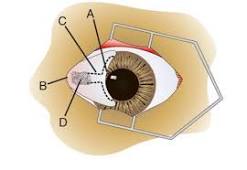Cherry Eye in Dogs is a common condition that affects many canine companions. Understanding what it is, how it occurs, and how to address it is essential for any pet owner. In this comprehensive guide, we delve into the intricacies of Cherry Eye in Dogs, providing valuable insights and actionable tips for optimal pet care.
Understanding Cherry Eye in Dogs
Cherry Eye in Dogs, scientifically known as nictitans gland prolapse, occurs when the gland located in the third eyelid protrudes or swells, resulting in a red, cherry-like appearance. This condition primarily affects young dogs, particularly certain breeds predisposed to it, such as Bulldogs, Beagles, and Cocker Spaniels.
Cherry Eye often manifests as a noticeable red mass in the corner of the eye, leading to discomfort and irritation for the affected dog. While it is not typically painful, it can cause secondary complications if left untreated.
Causes of Cherry Eye in Dogs:
- The exact cause of Cherry Eye in Dogs is not fully understood, but it is believed to be related to the weakness of connective tissues that support the gland in the third eyelid.
- Some contributing factors may include genetic predisposition, immune system abnormalities, and anatomical variations.
Symptoms of Cherry Eye in Dogs:
Identifying Cherry Eye in Dogs early is crucial for prompt treatment. Common symptoms include:
- Swelling and redness in the corner of the eye
- Visible protrusion of the third eyelid gland
- Excessive blinking or squinting
- Watery or mucous discharge from the affected eye
- To study about entropion in dogs click here

Diagnosis and Treatment Options:
Diagnosing Cherry Eye in Dogs typically involves a comprehensive eye examination by a veterinarian. Treatment options may vary depending on the severity of the condition but often include:
- Medical Management: In mild cases, topical medications or anti-inflammatory drugs may be prescribed to reduce swelling and inflammation.
- Surgical Intervention: For moderate to severe cases or if conservative measures fail, surgical correction may be necessary. The surgical procedure involves repositioning or securing the prolapsed gland to prevent recurrence.

Preventing Cherry Eye in Dogs:
While Cherry Eye in Dogs cannot always be prevented, certain measures may help reduce the risk:
- Regular Eye Examinations: Schedule routine check-ups with your veterinarian to monitor your dog’s eye health.
- Avoid Trauma: Prevent injury to the eye area by keeping your dog away from potential hazards or rough play.
- Maintain Optimal Health: Ensure your dog receives a balanced diet, regular exercise, and appropriate veterinary care to support overall well-being.
Living with Cherry Eye: Tips for Pet Owners:
Managing Cherry Eye in Dogs involves ongoing care and vigilance. Here are some tips to help pet owners navigate this condition:
- Follow Veterinarian Recommendations: Adhere to your veterinarian’s guidance regarding medication administration, post-operative care, and follow-up appointments.
- Monitor for Recurrence: Keep an eye on your dog’s eyes for any signs of recurrence or complications following treatment.
- Provide Comfort: Offer your pet a comfortable environment to rest and recuperate, minimizing stress and discomfort during the healing process.
Conclusion:
In conclusion, Cherry Eye in Dogs is a manageable condition with timely intervention and proper care. By understanding the causes, symptoms, and treatment options, pet owners can provide their furry companions with the necessary support for optimal eye health. Remember to consult with your veterinarian for personalized recommendations tailored to your dog’s specific needs.
- For more details Click here
FAQs:
- What breeds are most prone to Cherry Eye in Dogs
- Certain breeds, including Bulldogs, Beagles, and Cocker Spaniels, are more predisposed to Cherry Eye due to genetic factors.
- Can Cherry Eye in Dogs resolve on its own without treatment?
- While spontaneous resolution is possible in some cases, it is not recommended to rely solely on this outcome, as Cherry Eye can lead to complications if left untreated.
- Is surgery the only treatment option for Cherry Eye in Dogs?
- While surgery is often recommended for moderate to severe cases, mild cases may be managed with topical medications or anti-inflammatory drugs under veterinary supervision.
- How successful is Cherry Eye surgery in Dogs?
- Cherry Eye surgery in Dogs has a high success rate, with most dogs experiencing significant improvement in eye appearance and comfort postoperatively.
- What are the potential complications of untreated Cherry Eye in Dogs?
- Untreated Cherry Eye in Dogs can lead to chronic eye irritation, dry eye (keratoconjunctivitis sicca), and secondary infections, potentially compromising your pet’s vision and ocular health.
- Can Cherry Eye in Dogs recur after surgical correction?
- While recurrence is possible, especially if the underlying cause is not addressed, surgical techniques have evolved to minimize the risk, and diligent postoperative care can help prevent recurrence.


1 thought on “Cherry Eye in Dogs: Understanding, Treatment, and Prevention”